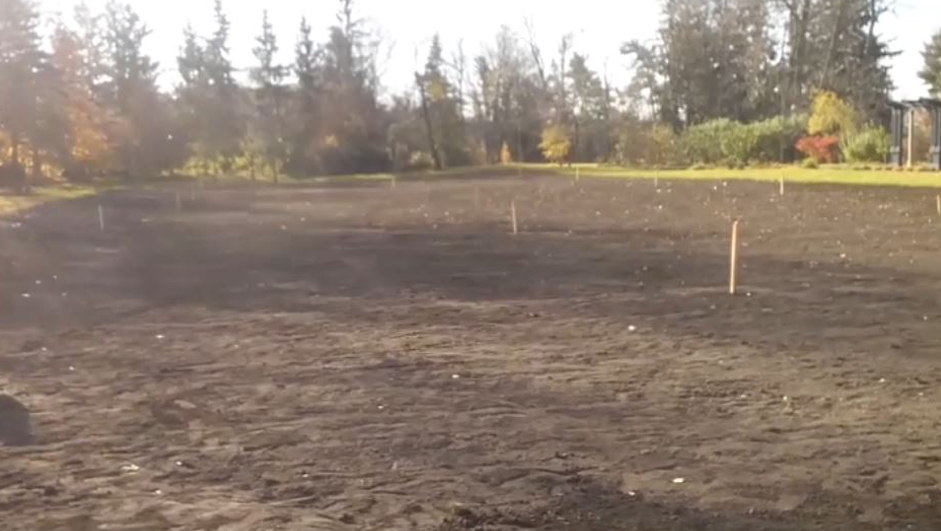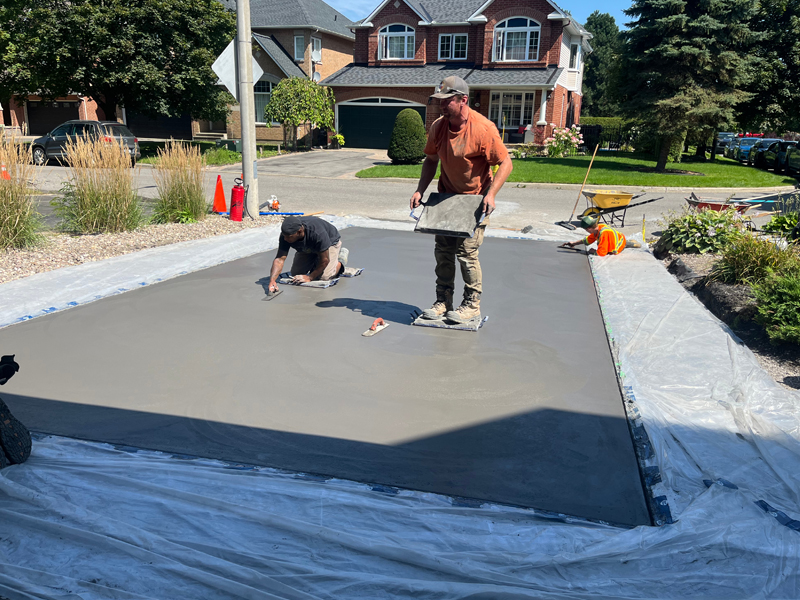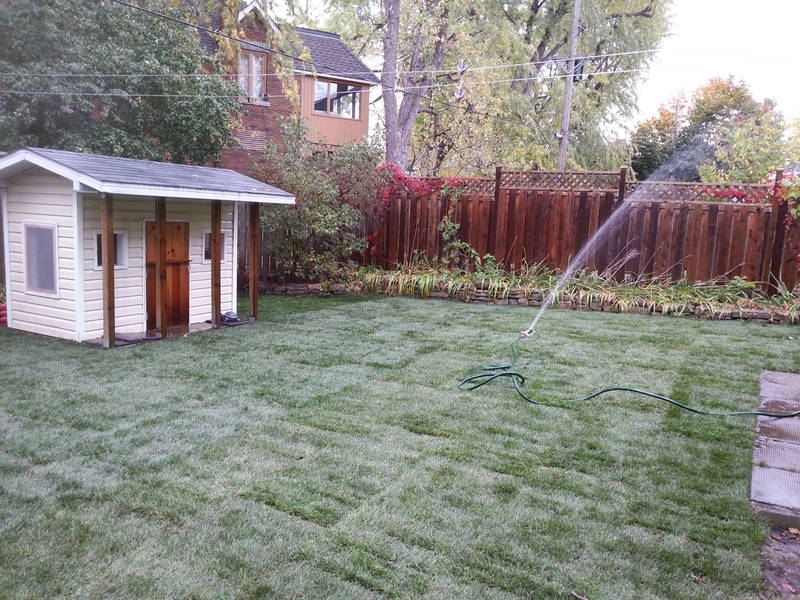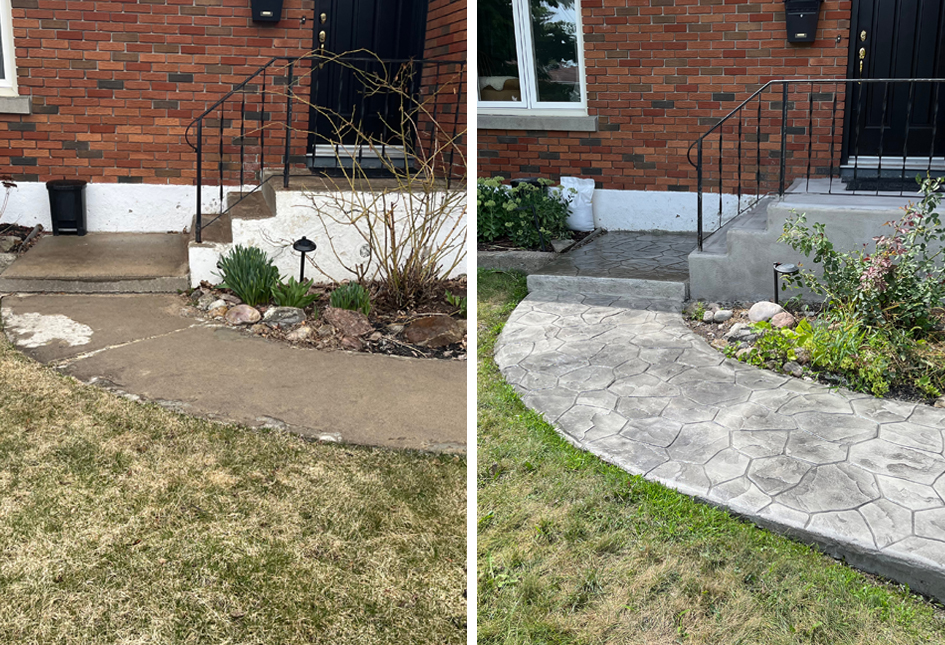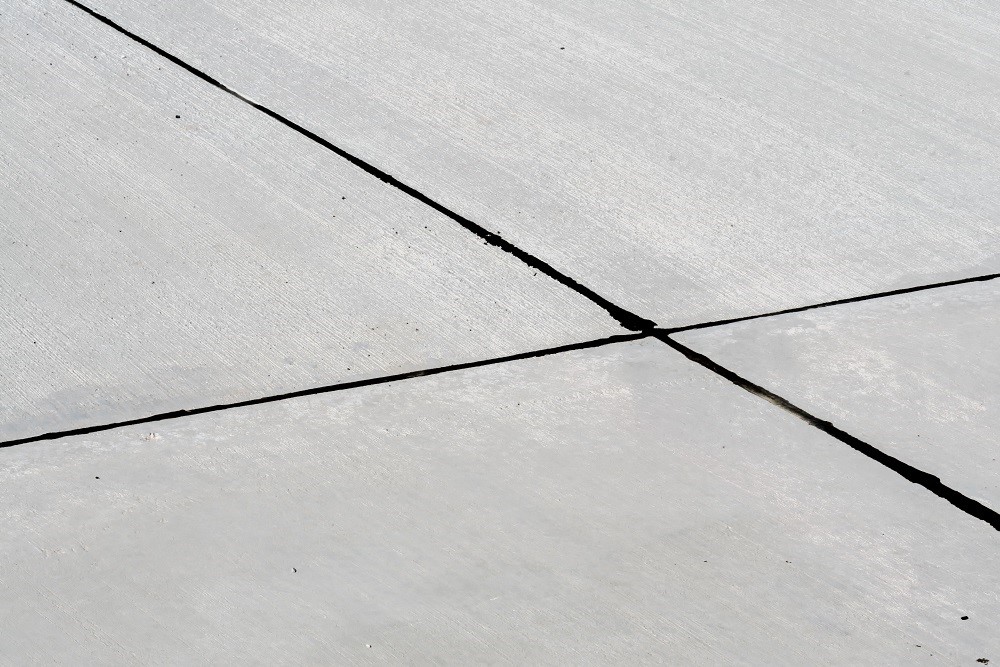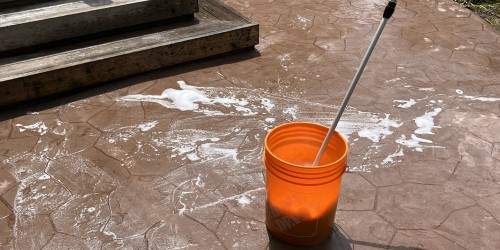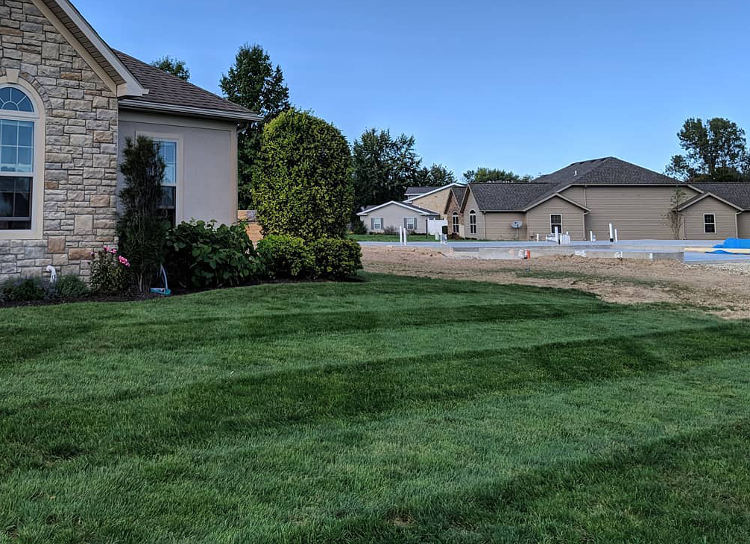This guide will help to ensure that your new sod gets the best start, takes root quickly and goes onto to thrive in the long term. It is important to start with the proper soil bed, use high quality sod and then water like crazy. In addition we will go into detail about mowing and fertilizing best practices.
Preparing to Lay Sod
Soil Bed Preparation
The long term health of your sod will depend on the quality of the soil bed. Ideally there should be 8 inches of soil under the new sod. That includes existing soil and does not mean that you need to add 8 inches of new soil unless you’re starting from scratch.
In a typical re-sodding application the old grass will be removed along with some old soil. You will want to replace all the soil that has been removed so the lawn isn’t lower than it was before. Extra soil is also typically added to flatten out some low spots and improve grading, therefore it is advisable to add about 2-3 inches of new soil. That comes out to about 2 yards per 500 square feet. Use high quality, residential topsoil, avoid using soil that has a higher concentration of debris such as small pieces of wood and stone. Less debris means more nutrients for the grass and better water retention ability. New soil is nutrient rich compared to the existing soil that may have been drained of its nutrients from years of feeding the old grass. Fertilizer can also be added to the soil but is not necessary.
This new soil bed should be graded evenly so that there are now low spots where water could pool and over saturate the grass.The lawn should slope away from any buildings on the property and drain into any ditches or drainage areas between properties. The soil must be rolled with a lawn roller to compress the new soil
Sod Installation Considerations
The sod should be laid the same day it was cut from the farm. Sod that sits for longer than 48 hours can start to mould and die.
For more information on the re-sodding process visit our sod installation page.
Post-Installation Care Tips
Watering
To measure how much water you’re applying, place a can or anything to catch the water and just measure the depth with a ruler or measuring tape. Typically 1” of water takes about 1 hour of running a sprinkler. If you’re unsure whether you’ve watered enough, lift a corner of a piece of sod and check how wet the soil is. Ideally, the soil 3 to 4 inches below the surface should be moist.
Day 1 - Within half an hour of your sod being laid it should get 1” - 2” of water.
Week 1 - Apply 1” - 2” of water every day.
Weeks 2 & 3 - Apply 1” - 2” of water every second day.
Week 4 - Apply 1” - 2” of water twice this week
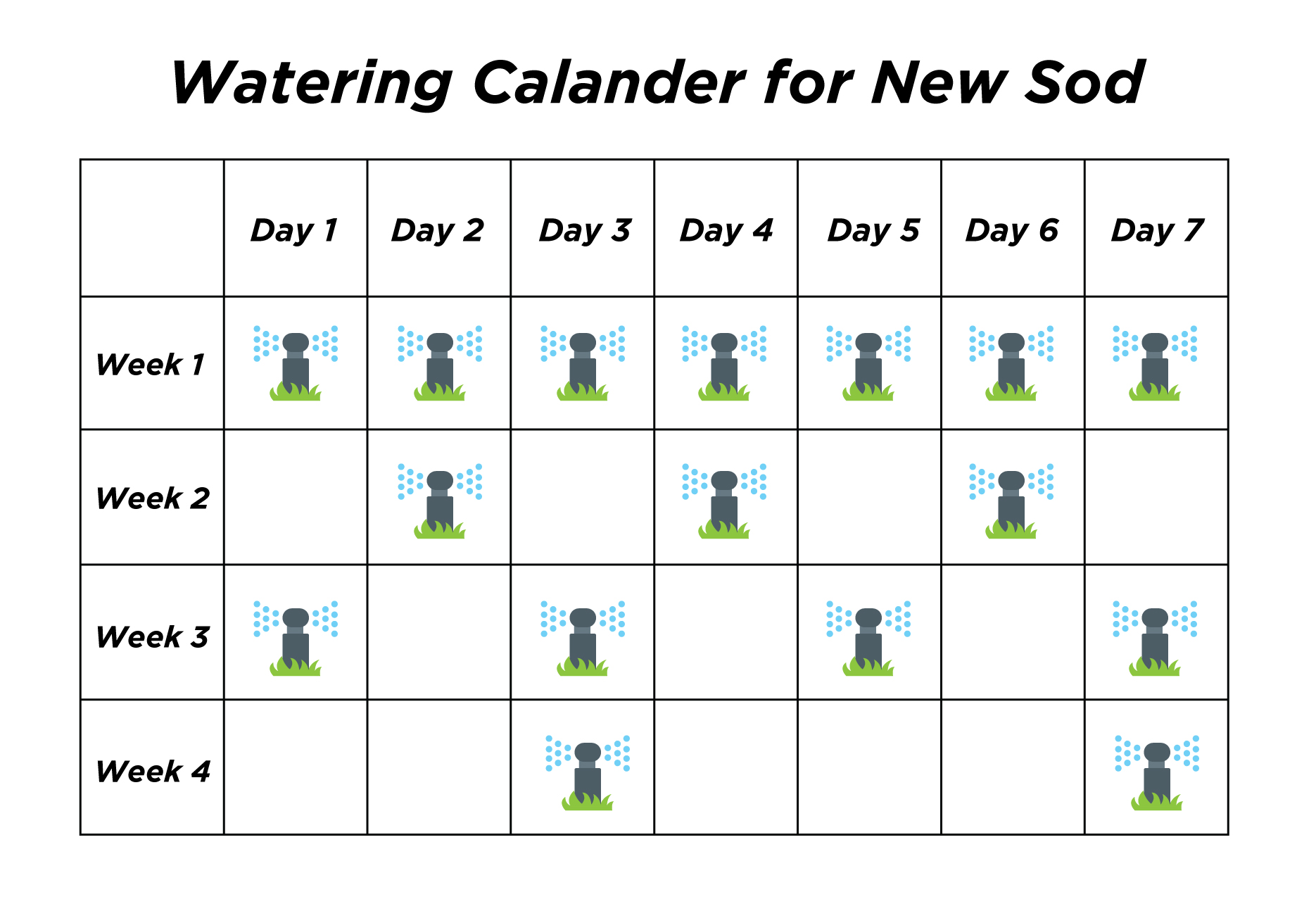
Adjust your watering depending on weather conditions. In the cooler temperatures of spring and fall, apply ½ “ - 1” per day but in July and August apply 1” - 2” per day. Also adjust the amount of water you apply depending on how much it rains. Always water in the morning or at night to avoid water loss by evaporation.
Make sure water is getting to all areas of your new sod. Corners and edges are easily missed +and are particularly vulnerable to drying out faster than the center. Areas near buildings dry-out faster because of reflected heat and may require more water.
Mowing
In the Ottawa area sod is predominantly made with Kentucky Blue Grass so these instructions are based on that type of grass. When the grass gets to about 3.5” - 4.5” tall it is time to mow. This may happen within one week of installation and that is fine. The roots do not have to be fully established before you can start mowing. Set your mower height to 2.5” - 3”. That is the ideal length for Kentucky Bluegrass to thrive. Never cut off more than ⅓ of the grass blade. So if your grass has grown very tall cut it down gradually over a few days giving a couple days in between mowings. Leave the grass clippings on the lawn as they will provide nutrients to the soil.
Fertilizing
Make sure to use a fertilizer blend that is appropriate for the time of year and follow this fertilizing schedule:
Once in spring
Once in early summer
Once in late summer
Once in fall
For more lawn care tips check out our Ultimate Lawn Care Guide.

